

Alphabet books offer a vivid insight into the history of literacy and culture, as well as concepts of childhood. The Children's Book Collection at UCLA contains a rich array of these materials, some well-worn and much-used, some still bright and fresh. Each is a gem of print production and graphical imagery from another time and place. Though the history of alphabet books continues to the present, this exhibit focuses on the works in our collections published between 1700 and 1900, including horn books, primers, works of didacticism and seriousness, whimsy and play.
2. A Jumble ABC
3. A Little Pretty Pocket-Book
4. A New Lottery Book of Birds And Beasts
5. A Pretty Play-Thing for Children of All Denominations
8. ABC of Objects for Home And School
10. ABC with Pictures & Verses
12. Alphabet Et Instruction Pour Les Enfans
16. Dolly's ABC Book
17. Flora's ABC
18. Home ABC
22. Hornbook C. 1700
23. Large Letters for the Little Ones
24. Little ABC Book
25. Little People: An Alphabet
26. Martin's Nursery Battledoor
27. Mother Goose ABC
28. My Darling's ABC
29. Orbis Sensualium Pictus Quadrilinguis
30. People of All Nations: A Useful Toy for Girl Or Boy
31. Picture Alphabet
32. Pretty ABC
33. Railway ABC
34. Rusher's Reading Made Most Easy
38. The Alphabet of Old Friends
40. The Amusing Alphabet for Young Children Beginning To Read
42. The Child's Christian Education
45. The Easter Gift
47. The Favorite Alphabet for the Nursery
49. The Franklin Alphabet And Primer
51. The Golden ABC
55. The Moral And Entertaining Alphabet
57. The Old Testament Alphabet
59. The Picture Alphabet for Little Children
62. The Sunday ABC
63. The Union ABC
64. The Young Child's ABC, Or, First Book
65. Tom Thumb's Alphabet: Picture Baby-Books
67. Warne's Alphabet And Word Book: with Coloured Pictures
68. Wood's Royal Nursery Alphabet
Title The Child's New Plaything
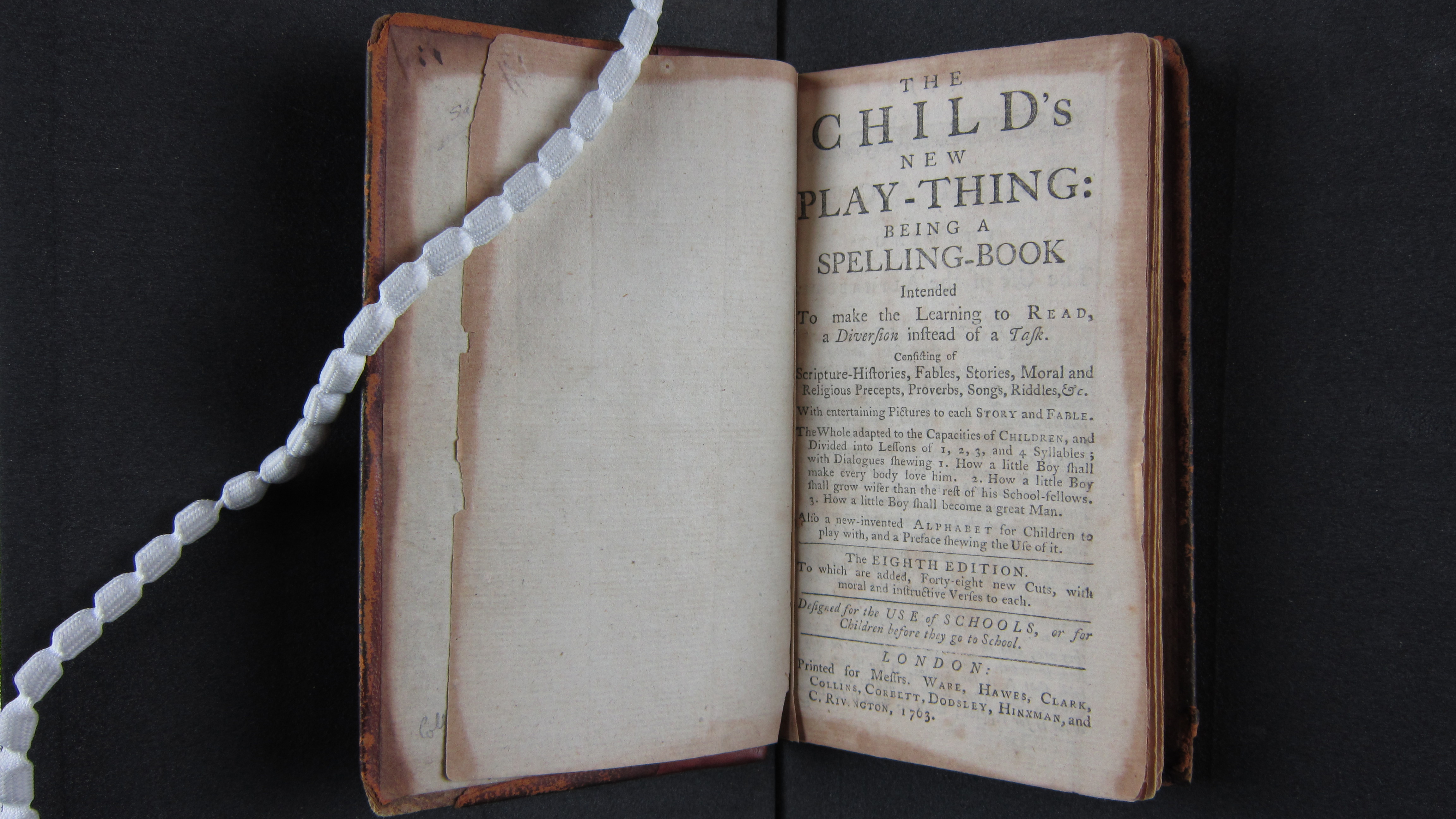
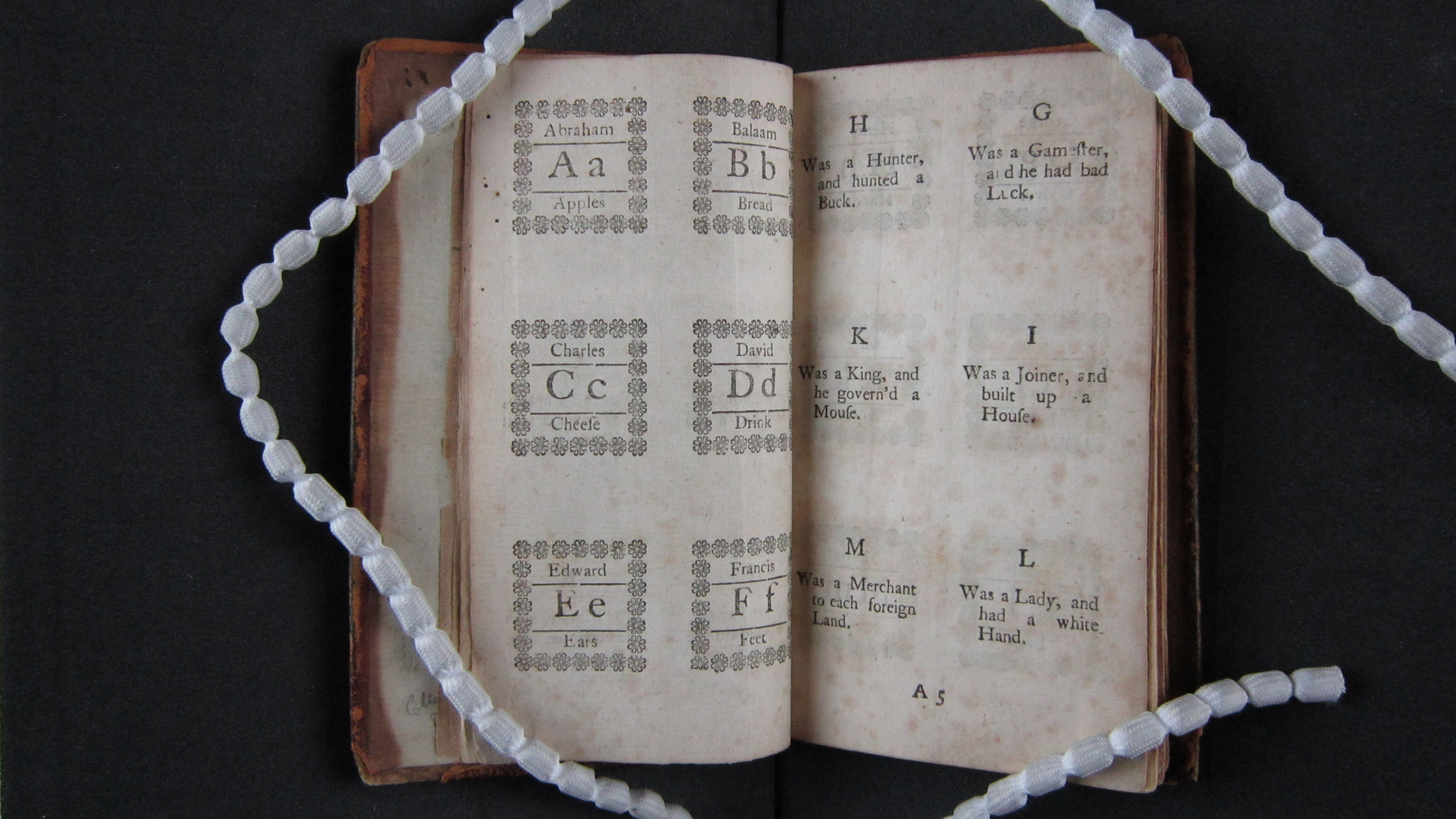
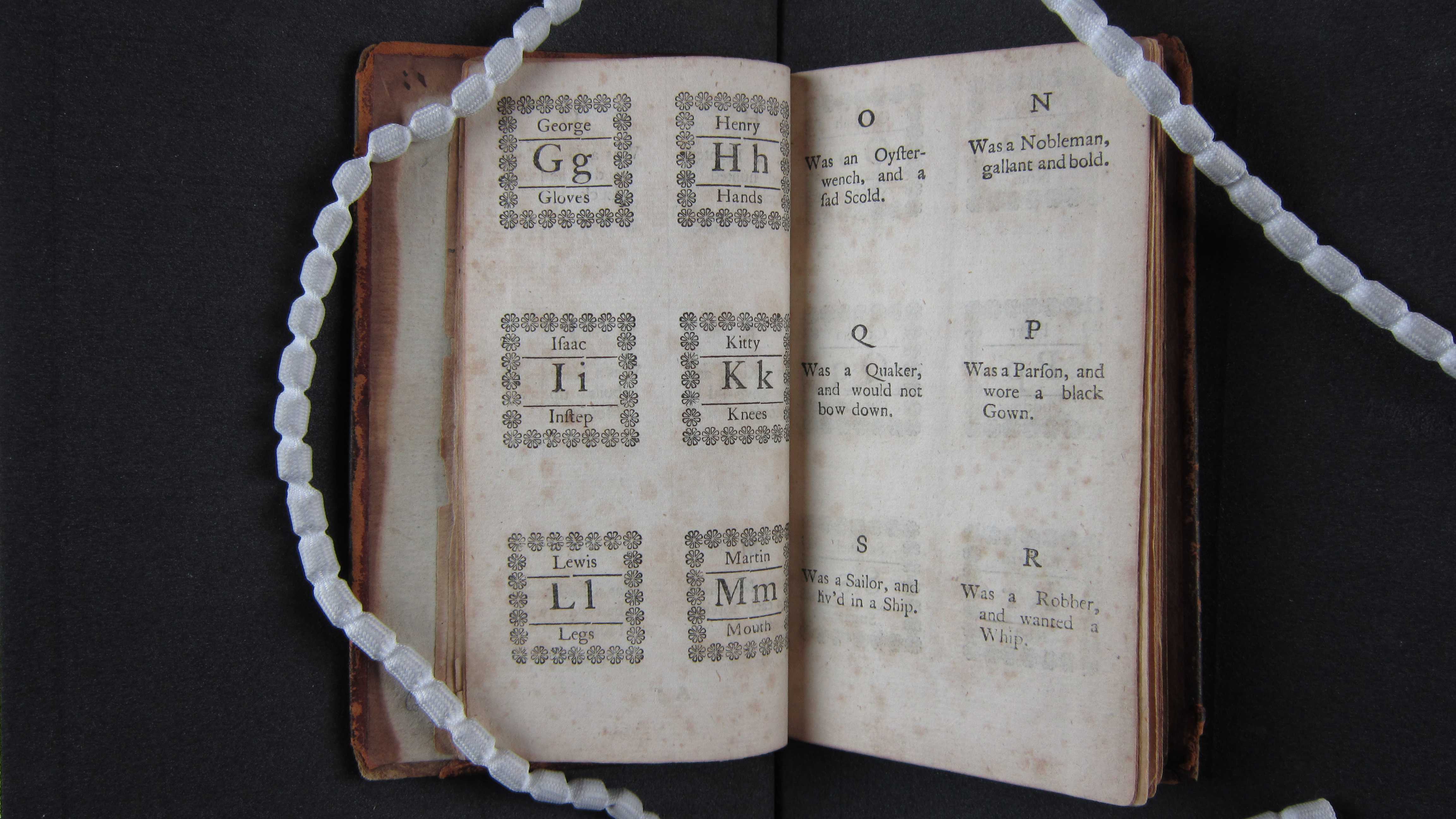

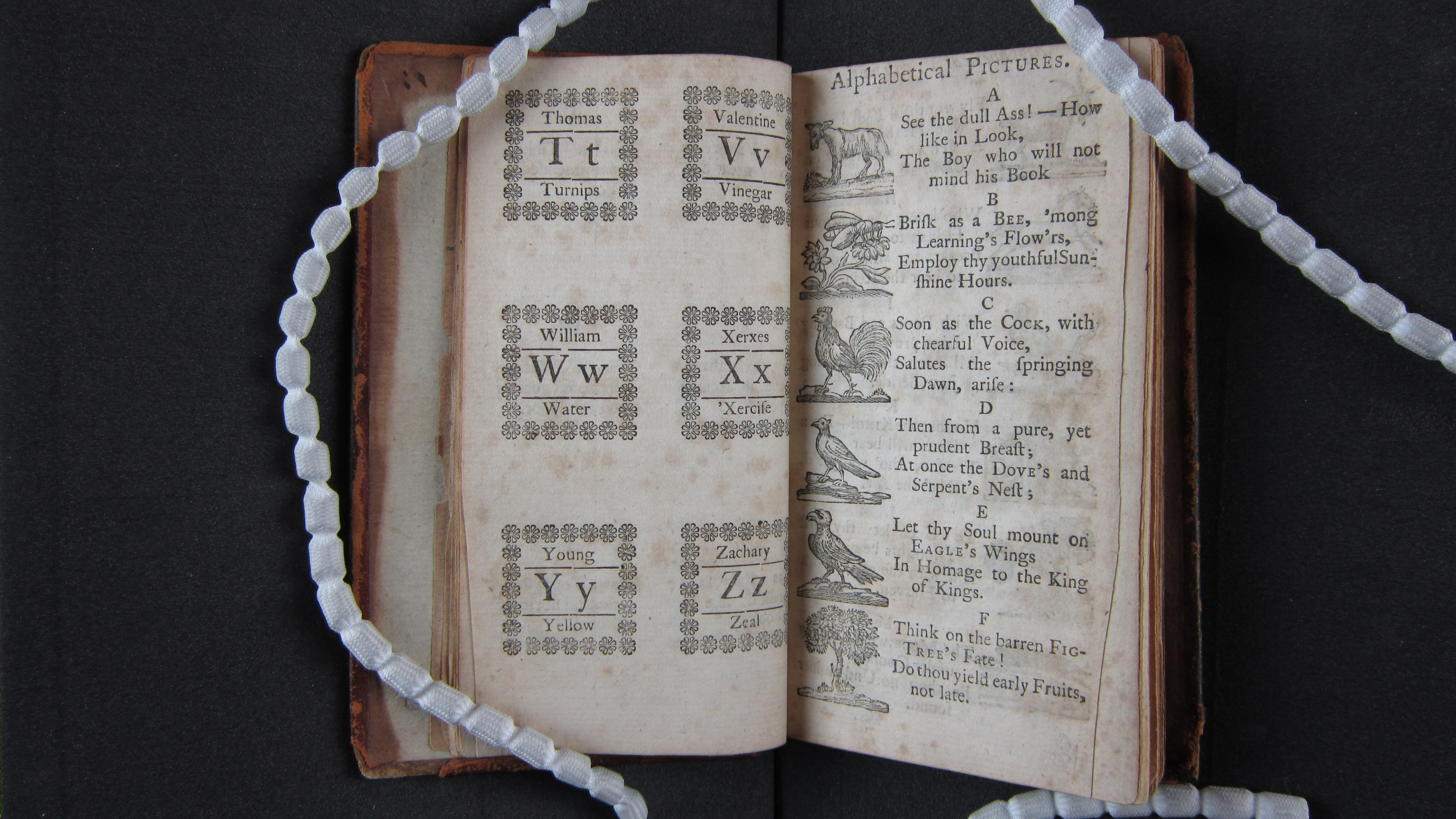
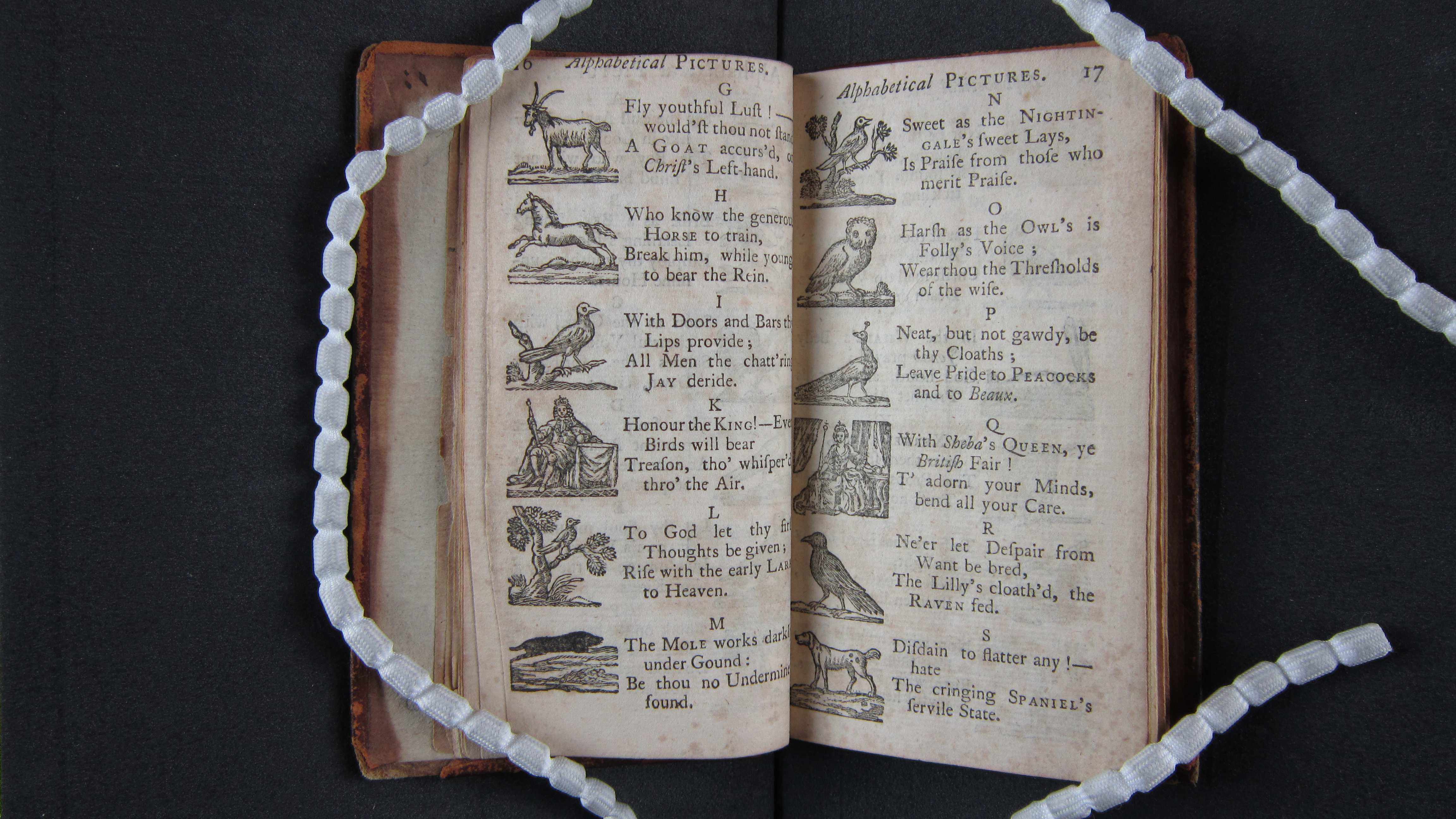
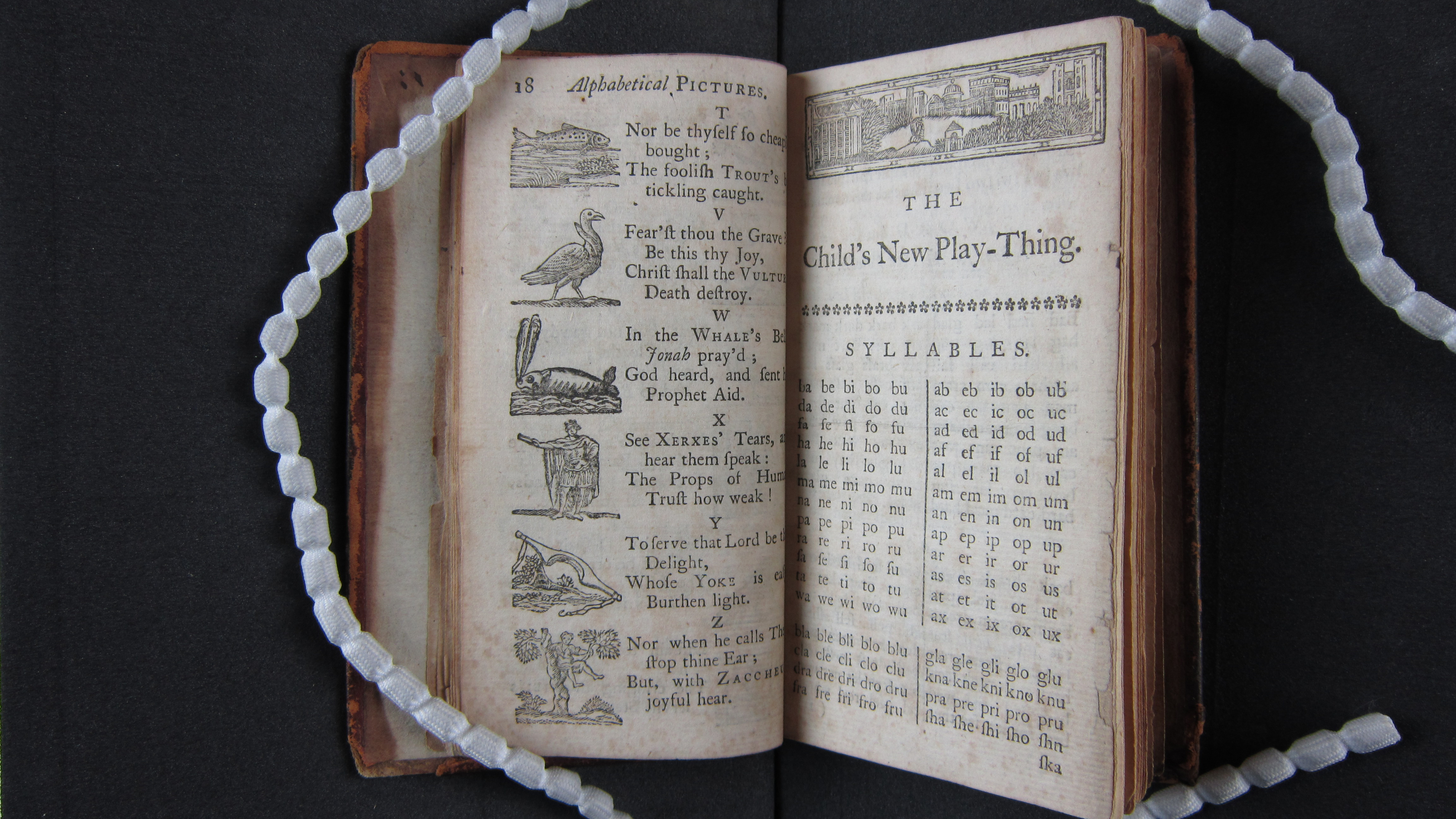
Brief description 167, [1] p., [1] leaf of plates (folded) : ill. Folding plate alphabet: This alphabet is to be cut into single squares for children to play with. Selections in prose and verse. Advertisement: [1] page at end. UCLA copy imperfect? p. 1-2 wanting?
Full description The Child's New Plaything was first printed in 1742, and although the author was anonymous, the book has been attributed to Mary Cooper. This eighth edition copy included forty-eight new woodcuts. The book was designed for use in schools, or else for use at home for younger children. A unique set of alphabet cut-outs was included, and intended for flash-card use. The book's preface described how these cards were designed for learning games. The Child's New Plaything was divided into a series of lessons, starting with single syllable words, and included fables, romances, and morality tales.
Literacy The Child's New Plaything illustrated the changing conceptions of literacy in the 18th century. Since the Reformation, literacy and religion were linked as a method of both enlightening and controlling people. But by the latter half of the 18th century, economic progress changed the perceptions and purposes of literacy. Mandated education was more enforced, and the rise of dame schools and public schools led to a greater population of literate individuals. The Child's New Plaything was used at home to acquaint children with basic literacy skills before they entered school. Images accompany each letter of the alphabet. This format showed literacy at its most basic level, as a tool for decoding the written word. Philosopher John Locke's principles were reflected in the everyday terms chosen to accompany the alphabet letters, for these terms were easily recognizable to children, and more amusing than lofty spiritual vocabulary. The book was divided into a series of lessons, beginning with a simple alphabet, and progressing to syllables, sentences and stories. The sub-title implies that the book was also used in school, a further clue into the changing expectations for universal literacy.
Childhood The Child's New Plaything of 1763 exemplified the transition from sober 17th century Puritanical primers to more light-hearted and engaging instruction books of the 18th century. This notable spelling book broke away from tradition by introducing secular and entertaining material. In the first edition of The Child's New Plaything, publisher John Newbery credited enlightenment philosopher John Locke, and Locke's beliefs that children's reading material should be entertaining and amusing. The book's complete title provides unique insight into the evolving notion of childhood at the time. Part of the title reads The Child's New Plaything, Being a Spelling Book Intended to Make learning to read, a diversion Instead of a Task. This attempt to make learning fun contrasted with the strict Puritanical views of the prior century. By the late 18th century, spelling and alphabet books were no longer just tools to instill dominance and control over children, but were now a way to coax children to enjoy learning, and in doing so, mold their social and cultural understandings. Learning through play was a frivolous and unnecessary seeming concept in the 17th century. Yet this book does not completely break away from earlier traditional practices, and still maintains ideas of power and control over children. The book's title continues, The Child's New Plaything壽_ Consisting of Scripture History, Fables, Stories, Moral and Religious Precepts. An extensive list of words divided by syllables were included, as well as several fables, and these inclusions served as a compromise for parents who felt a purely entertaining book encouraged idleness.
Iconography The Child's New Plaything's secular imagery offers a unique perspective of the changing culture of the 18th century. Instead of the traditional A for Adam's fall, we now see terms such as A for apple, and C for cheese. This secular iconography represented a dramatic shift in the attitudes towards children's literature, not just in content, but in imagery as well. The spelling book included a cut-out alphabet, as well as lessons organized by number of syllables. Each section included alphabet pictures, a fable and a moral lesson. According to author E. Jennifer Monaghan, many of the cultural images conjured by these tales were part of the emerging industrial viewpoint of the early 19th century. The tales carried undertones guiding children's behavior in a "consumer" society. For example, some of the fables encouraged readers to keep good company, and be wary of those who may cause trouble. The choices made by certain characters in these tales reflected both a growing spirit of individualism, and the theme that individuals controlled their own fate, without regard to divine will. Alphabet terms, such as J for joiner, and M for merchant, exhibited the increasing influence of industry, and the waning power of religion. Finally, romance tales evoked a medieval chivalry that contrasted with earlier stoic children's books.
Production The Child's New Plaything represented the birth of a publishing market for children's books. Publisher John Newbery printed the first edition espousing the beliefs of enlightenment philosopher John Locke, with the idea that reading should be fun, and not just instructive or morally uplifting. Locke also believed that learning should appeal to childish reason and understanding, and Newbery based his marketing approach on this principle. In support of Locke's ideas, Newbery recognized that children had their own consumer tastes, and these tastes could be catered to directly. For example, the book included a section of love poems for boys, and a separate section of love poems for girls. Thus the book appealed to both genders. Newbery also realized that parents had particular tastes as well, and so many of Newbery's books contain advertisements for his other publications. Some books were marketed as gifts for Christmas and Easter. Newbery produced a series of pretty books, all handsome and attractive alternatives to the chapbook, and all richly illustrated. This 1763 copy is bound in brown calf, with the title printed in gold, and with gold trim along the spine. Forty-eight woodcuts were added to this edition, many of them illustrating the fables and tales included in the lessons. However, only the elite could afford these lavish books, so the market for these leisure books remained small. Newbery took another innovative publishing approach by including romances, which were previously unheard of in spelling books. This again supported Locke's premise of appealing to a child's imagination and sense of adventure. The Child's New Plaything was published in several editions in London and was also imported and advertised continuously in Colonial America.
Creator Mary Cooper (?)
Publisher B. Dod - bookseller to the Society for Promoting Christian Knowledge
Publication place London
Date 1763
UCLA Call Number CBC PE1119.A1 C468 1763
Repository UCLA Charles E. Young Research Library, Dept. of Special Collections
Dimensions 16 cm, height
Technologies of production Printing, woodcut (process)
Media and Materials Brown calf over boards, red leather label on spine, rebacked. In peach/gray marbled case.
Additional Information Inscription: Initials LH on top right corner of first page
Caption